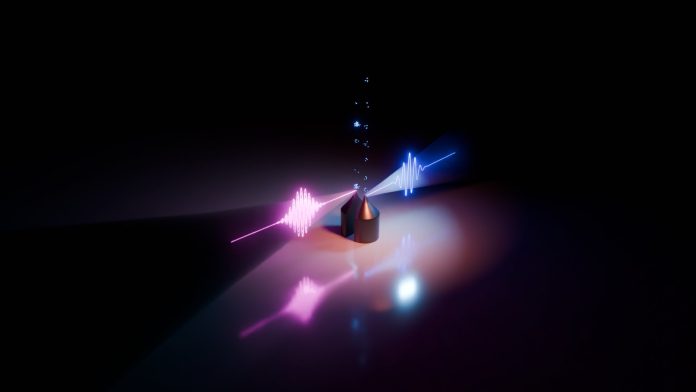
Scientists have made a fascinating discovery about electrons ejected by intense quantum light.
While the behavior of light photons is well-studied, the statistical patterns of electrons emitted under such light conditions were largely unknown until now.
Researchers from the Max Planck Institute for the Science of Light (MPL) and Friedrich-Alexander-Universität Erlangen-Nürnberg (FAU) have found that when nanometer-sized metal needle tips are hit with ultrashort pulses of bright quantum light, the electron emissions show extreme and unusual statistical behaviors.
Their findings were published in the journal Nature Physics and offer new insights that could enhance electron microscope technology.
In this study, led by Prof. Maria Chekhova at MPL and Prof. Peter Hommelhoff at FAU, researchers explored how strong quantum light interacts with matter.
They used both classical light and quantum light to illuminate tiny metal needle tips, observing the electrons released and analyzing their statistical properties.
Electrons emitted by classical light follow a Poissonian distribution, meaning each electron is emitted independently, with the number of electrons varying slightly from pulse to pulse.
However, when the researchers switched to using bright squeezed vacuum (a type of quantum light with strong photon-number fluctuations), they observed that the statistics of the photons were transferred to the electrons.
Using the bright squeezed vacuum, they recorded extreme statistical events, such as up to 65 electrons being emitted from a single light pulse, despite the average being only 0.27 electrons per pulse.
In a Poissonian distribution, the likelihood of such an extreme event—where the result exceeds the mean by a factor of 240—would be astronomically low, about 10^(-128). The researchers also found that by altering the number of modes in the squeezed vacuum, they could control the electron-number distribution.
“Our results show that photon statistics are imprinted from the driving light onto the emitted electrons, opening the door to new sensor devices and strong-field optics with quantum light and electrons,” said Maria Chekhova, research group leader at MPL.
To make this complex concept more relatable, FAU Ph.D. student Jonas Heimerl used an everyday example. Imagine spreading raisins on muffins, with an average of two raisins per muffin.
Most muffins would have around two raisins, but occasionally, some might have none or five.
However, getting more than 50 raisins in a single muffin is practically impossible with a Poisson distribution. The multi-electron events observed in these experiments were like finding 480 raisins in one muffin, an extraordinary occurrence.
This discovery shows how photon statistics can directly influence electron emissions, providing a deeper understanding of electron behavior under intense light and paving the way for advancements in sensor technology and quantum light applications.



